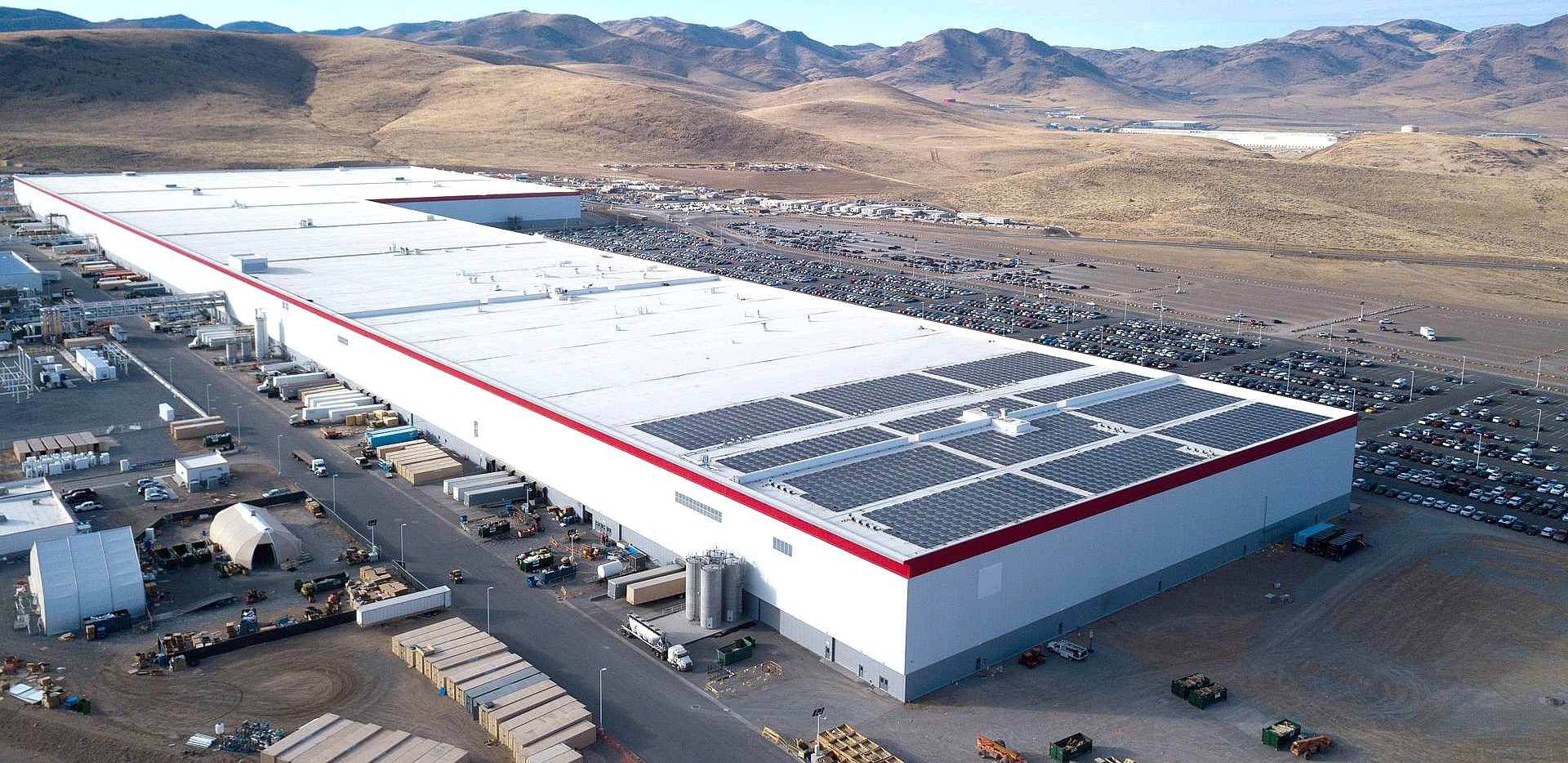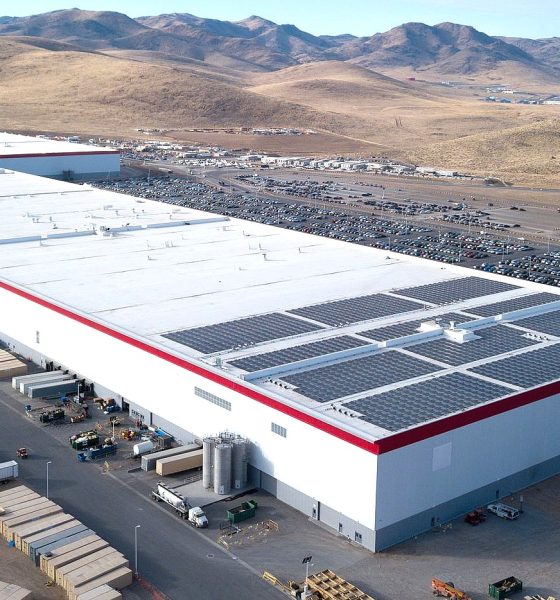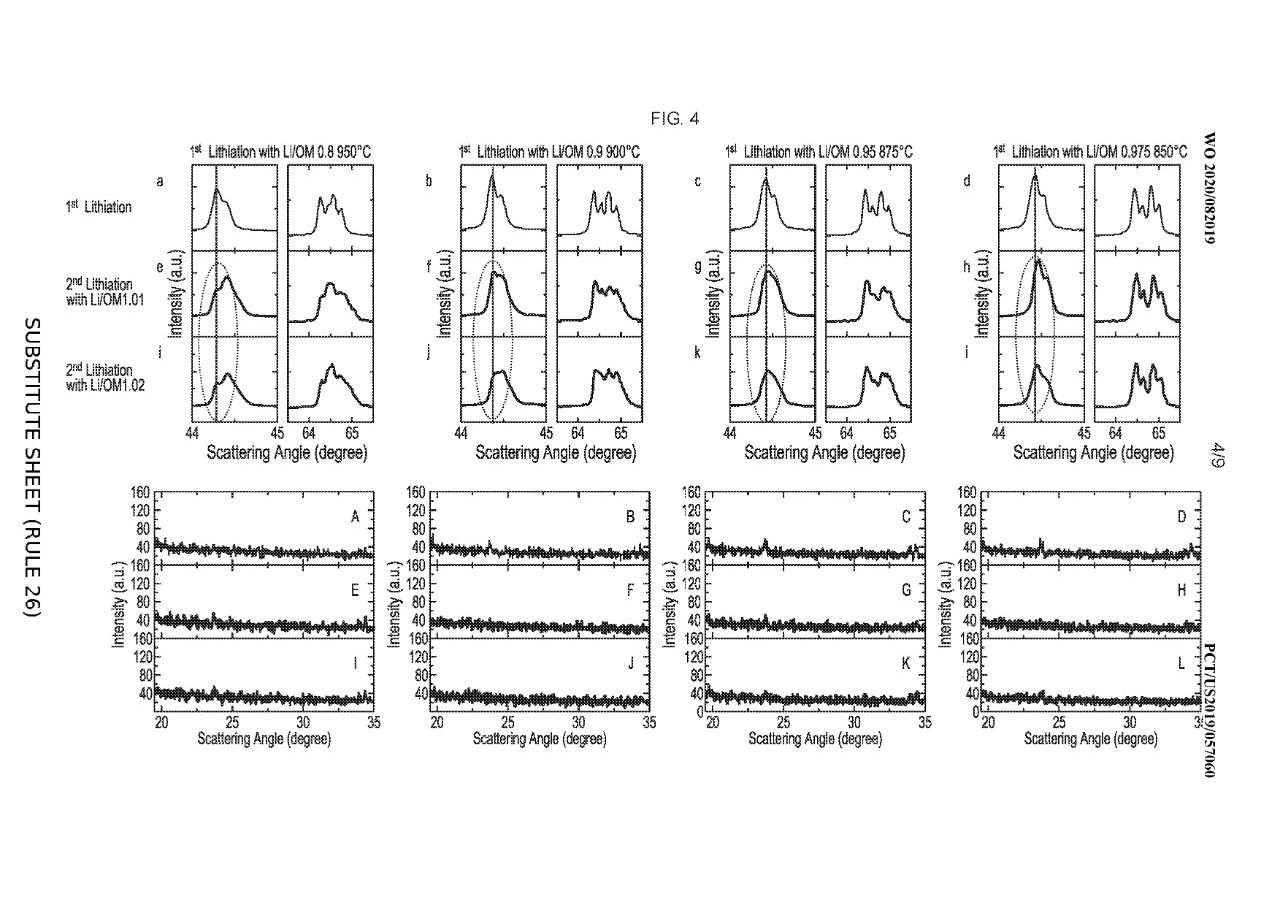

News
Tesla’s 1 million-mile battery takes a step forward with new electrode patent
A newly released patent from Tesla has teased what appears to be a step towards Elon Musk’s one-million-mile battery target. The patent describes a new lithiation process for battery cells, which has the potential to improve the quality of cells and possibly even save on costs.
Tesla has submitted a patent titled “Method for Synthesizing Nickel-Cobalt-Aluminum Electrodes.” The document outlines a new electrode synthesizing method that could be used for battery cell production. The proposed application defines an efficient heating process for Nickel-Cobalt-Aluminum (NCA) electrodes. According to the document, previous heating methods at times cause the formation of a lithium substrate known as L15AIO4, which is an impurity. Lowering the amount of lithium within a battery reduces the presence of the contamination, but also leads to “materials with inferior electrochemical properties.”
As noted in the patent, batteries would heat to a temperature high enough to allow for single crystal growth. The revised ratio of lithium to other metals would limit the formation of impurities during the first heating process. Then, the battery would be heated a second time at a temperature lower than the first heating cycle. Researchers involved in the patent noted that this process helped develop an impurity-free single crystal NCA that allowed battery cells to achieve over 4,000 charge cycles.

The patent outlines the heating process:
“Methods disclosed herein include a first lithiation step, wherein a lithium and an other metal component are present in a first lithium/other metal ratio of less than 1.0 and are sintered at a temperature between 800 and 950°C for a time period between 1 and 24 hours to obtain a first lithiated material. The method further includes a second lithiation step, wherein a lithium and a other metal component are present in a second lithium/other metal ratio and further wherein the first lithiated electrode material is sintered with additional LiOHTLO at between 650 and 760°C for a time period between 1 and 24 hours to obtain a second lithiated material.”
In summary, the use of NCA electrodes in batteries would allow for single-crystal materials to present themselves without impurities. The lack of contaminants could lead to an increased lifespan of the cells altogether, helping Tesla take a giant leap forward in its quest to produce a one-million-mile battery for its vehicles.
Interestingly enough, one of the listed names on the patent is battery expert and researcher Jeff Dahn, who has worked with Tesla in the past. Tesla summoned the help of Dahn, who leads a team of researchers at Canada’s Dalhousie University, to help the electric car maker improve its batteries. Dahn’s research has helped Tesla’s development of high-quality battery cells by inventing new electrode combinations, like the one described in this patent, and electrolyte solutions aimed at further increasing battery life.
Tesla’s batteries are always in a state of improvement, and over the years, the cells that the company utilizes for its vehicles and energy storage systems have gotten more energy-dense. Economies of scale that is made possible with facilities such as Gigafactory Nevada have also gone a long way towards helping Tesla near the $100 per kWh mark, a level that is widely considered the point where electric vehicles could achieve price parity with their internal combustion-powered counterparts.
Apart from its battery patents, Tesla has also been busy acquiring several battery companies. Among these are Maxwell Technologies and Hibar Systems, both of which were developing technologies that would allow for better battery quality and more efficient production costs. Relatively simple developments such as those described in Tesla’s recent patent help this cause too, especially since every little bit of optimization helps.
Tesla’s development of its battery technology could lead to its vehicles lasting 20 to 30 years, far longer than petrol-powered cars. It appears the company is planning to create a product line that could stay with owners for extended periods with relatively no annual maintenance. And that, together with price parity, can very well be the catalyst for society’s acceleration towards sustainability.
The full text of Tesla’s “Method for Synthesizing Nickel-Cobalt-Aluminum Electrodes” patent could be accessed in the document below.
METHOD FOR SYNTHESIZING NIC… by Joey Klender on Scribd

Elon Musk
Tesla’s Elon Musk: 10 billion miles needed for safe Unsupervised FSD
As per the CEO, roughly 10 billion miles of training data are required due to reality’s “super long tail of complexity.”

Tesla CEO Elon Musk has provided an updated estimate for the training data needed to achieve truly safe unsupervised Full Self-Driving (FSD).
As per the CEO, roughly 10 billion miles of training data are required due to reality’s “super long tail of complexity.”
10 billion miles of training data
Musk comment came as a reply to Apple and Rivian alum Paul Beisel, who posted an analysis on X about the gap between tech demonstrations and real-world products. In his post, Beisel highlighted Tesla’s data-driven lead in autonomy, and he also argued that it would not be easy for rivals to become a legitimate competitor to FSD quickly.
“The notion that someone can ‘catch up’ to this problem primarily through simulation and limited on-road exposure strikes me as deeply naive. This is not a demo problem. It is a scale, data, and iteration problem— and Tesla is already far, far down that road while others are just getting started,” Beisel wrote.
Musk responded to Beisel’s post, stating that “Roughly 10 billion miles of training data is needed to achieve safe unsupervised self-driving. Reality has a super long tail of complexity.” This is quite interesting considering that in his Master Plan Part Deux, Elon Musk estimated that worldwide regulatory approval for autonomous driving would require around 6 billion miles.
FSD’s total training miles
As 2025 came to a close, Tesla community members observed that FSD was already nearing 7 billion miles driven, with over 2.5 billion miles being from inner city roads. The 7-billion-mile mark was passed just a few days later. This suggests that Tesla is likely the company today with the most training data for its autonomous driving program.
The difficulties of achieving autonomy were referenced by Elon Musk recently, when he commented on Nvidia’s Alpamayo program. As per Musk, “they will find that it’s easy to get to 99% and then super hard to solve the long tail of the distribution.” These sentiments were echoed by Tesla VP for AI software Ashok Elluswamy, who also noted on X that “the long tail is sooo long, that most people can’t grasp it.”
News
Tesla earns top honors at MotorTrend’s SDV Innovator Awards
MotorTrend’s SDV Awards were presented during CES 2026 in Las Vegas.

Tesla emerged as one of the most recognized automakers at MotorTrend’s 2026 Software-Defined Vehicle (SDV) Innovator Awards.
As could be seen in a press release from the publication, two key Tesla employees were honored for their work on AI, autonomy, and vehicle software. MotorTrend’s SDV Awards were presented during CES 2026 in Las Vegas.
Tesla leaders and engineers recognized
The fourth annual SDV Innovator Awards celebrate pioneers and experts who are pushing the automotive industry deeper into software-driven development. Among the most notable honorees for this year was Ashok Elluswamy, Tesla’s Vice President of AI Software, who received a Pioneer Award for his role in advancing artificial intelligence and autonomy across the company’s vehicle lineup.
Tesla also secured recognition in the Expert category, with Lawson Fulton, a staff Autopilot machine learning engineer, honored for his contributions to Tesla’s driver-assistance and autonomous systems.
Tesla’s software-first strategy
While automakers like General Motors, Ford, and Rivian also received recognition, Tesla’s multiple awards stood out given the company’s outsized role in popularizing software-defined vehicles over the past decade. From frequent OTA updates to its data-driven approach to autonomy, Tesla has consistently treated vehicles as evolving software platforms rather than static products.
This has made Tesla’s vehicles very unique in their respective sectors, as they are arguably the only cars that objectively get better over time. This is especially true for vehicles that are loaded with the company’s Full Self-Driving system, which are getting progressively more intelligent and autonomous over time. The majority of Tesla’s updates to its vehicles are free as well, which is very much appreciated by customers worldwide.
Elon Musk
Judge clears path for Elon Musk’s OpenAI lawsuit to go before a jury
The decision maintains Musk’s claims that OpenAI’s shift toward a for-profit structure violated early assurances made to him as a co-founder.

A U.S. judge has ruled that Elon Musk’s lawsuit accusing OpenAI of abandoning its founding nonprofit mission can proceed to a jury trial.
The decision maintains Musk’s claims that OpenAI’s shift toward a for-profit structure violated early assurances made to him as a co-founder. These claims are directly opposed by OpenAI.
Judge says disputed facts warrant a trial
At a hearing in Oakland, U.S. District Judge Yvonne Gonzalez Rogers stated that there was “plenty of evidence” suggesting that OpenAI leaders had promised that the organization’s original nonprofit structure would be maintained. She ruled that those disputed facts should be evaluated by a jury at a trial in March rather than decided by the court at this stage, as noted in a Reuters report.
Musk helped co-found OpenAI in 2015 but left the organization in 2018. In his lawsuit, he argued that he contributed roughly $38 million, or about 60% of OpenAI’s early funding, based on assurances that the company would remain a nonprofit dedicated to the public benefit. He is seeking unspecified monetary damages tied to what he describes as “ill-gotten gains.”
OpenAI, however, has repeatedly rejected Musk’s allegations. The company has stated that Musk’s claims were baseless and part of a pattern of harassment.
Rivalries and Microsoft ties
The case unfolds against the backdrop of intensifying competition in generative artificial intelligence. Musk now runs xAI, whose Grok chatbot competes directly with OpenAI’s flagship ChatGPT. OpenAI has argued that Musk is a frustrated commercial rival who is simply attempting to slow down a market leader.
The lawsuit also names Microsoft as a defendant, citing its multibillion-dollar partnerships with OpenAI. Microsoft has urged the court to dismiss the claims against it, arguing there is no evidence it aided or abetted any alleged misconduct. Lawyers for OpenAI have also pushed for the case to be thrown out, claiming that Musk failed to show sufficient factual basis for claims such as fraud and breach of contract.
Judge Gonzalez Rogers, however, declined to end the case at this stage, noting that a jury would also need to consider whether Musk filed the lawsuit within the applicable statute of limitations. Still, the dispute between Elon Musk and OpenAI is now headed for a high-profile jury trial in the coming months.








